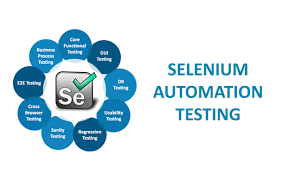Selenium is a constant topic of discussion when we discuss automated browser testing. Selenium is a favorite among developers and testers worldwide since it is one of the most powerful technologies for browser testing automation.
BROWSER TESTING AND AUTOMATION
Although they adhere to Open Web Standards, browser companies have their interpretations of these standards. Thoroughly debugging the website’s source code won’t guarantee that it will appear and function as intended on various browsers because they render HTML, CSS, and JavaScript in different ways (or different versions of a single browser).
To do compatibility testing correctly, product teams must limit their testing with a test specification document (test specs), which outlines general requirements, such as a list of features to test, which platforms, browsers, and versions to test on to meet the compatibility benchmark, test scenarios, timelines, and budget.
The following categories can be used to group the functionalities that will be tested:
- Base Functionality:
To guarantee that the most common browser-OS combinations may use the basic functionality. As an illustration, one might conduct tests to confirm that:
Every dialogue box and menu operates as expected.
All form fields accept entries after properly validating them.
The website correctly manages first-party cookies and cookie-dependent functionality like customization.
Seamless touch input is supported for mobiles and tablets.
- Design:
This makes sure that the typefaces, pictures, and overall layout of the website adhere to the guidelines provided by the Design team.
- Accessibility: Takes into consideration WCAG compliance to allow users with varying abilities to access the website.
The term “responsiveness” refers to a design’s ability to adapt to various screen sizes and orientations.
Running tests manually on various browsers and devices multiple times daily can become tiresome and time-consuming. One should become familiar with automation tools to handle this effectively. This article examines the tools, task runner usage, and the fundamentals of commercial browser testing automation software like HeadSpin.
The issue noted above might be resolved by automated browser testing. Cross-browser testing is carried out using automated techniques to ensure efficiency, scalability, and reuse provided by the framework & test platform for expedited product testing.
However, depending on the test scenarios, a good test strategy should include both manual and automated testing. It is not a practical answer to manually test every feature and functionality of a web app or website because it takes much time. If a manual execution is used, the effort to evaluate browser compatibility may appear enormous.
Selenium automation testing is widespread since it works with many operating systems and major browsers. It can create automated tests with well-known programming languages such as Python, Java, JavaScript, C#, and Ruby. Using practical automation testing tools (or frameworks) is essential to create test scripts that can be used to validate the application making automated browser testing a significantly superior option.
Per your corporate priorities, you can also automate a test. For instance, you can determine whether automating will benefit your firm or lessen technical complexity. If so, automation is undoubtedly an option.
WHAT IS SELENIUM?
Selenium testing describes testing carried out using the Selenium testing tool. A free and open-source tool for automated testing, Selenium is used to test a variety of web browsers. It checks web apps on many platforms and browsers. To construct Selenium Test Scripts, one may use a variety of programming languages, like Java, C#, and Python.
In addition to being a single tool, Selenium Software is a group of applications that individually cater to a specific enterprise’s Selenium QA testing requirements.
It contains various features that may be used to meet multiple organizational demands. In essence, it includes four different tools:
- Selenium RC (which is now deprecated)
- Selenium IDE (Selenium Integrated Development Environment)
- Selenium Grid
- Selenium WebDriver
WHY IS SELENIUM USED?
The main application of Selenium is to automate testing across several web browsers. It supports various browsers, including Chrome, Mozilla, Firefox, Safari, IE, and Selenium WebDriver, making it very simple to automate browser testing across these browsers.
WHY CHOOSE SELENIUM FOR AUTOMATED TESTING?
1. Support for Language and Framework
We are often stuck in this dilemma that the testing device we use knows the language we are working on. Selenium automation testing solves this problem.
Selenium supports all programming languages for software test automation, including Python, JavaScript, Java, C#, Ruby, and Perl.
Fluency in languages specific to Selenium is not demanded. These programming languages may be used to create scripts, and Selenium quickly turns them into Selenium-compliant code. Additionally, particular frameworks are available for each Selenium-supported language to aid in the creation of test scripts for Selenium test automation. Therefore, you won’t have to worry about language and framework support while using Selenium as a tool for automated testing.
2. Access to open source software
Selenium is open source and this is one of the several factors that enhances its benefits. As a result, Selenium is a publicly available automation framework that is open source and cost-free. Hence, you may save money and donate it to worthwhile charities.
Selenium has emerged as the most reliable web automation technology because it is simple to create test scripts to verify functioning. Developers and software engineers frequently receive assistance from the Selenium community in automating web browser functions and functionalities. Because Selenium is open source, the code can be changed to improve code management and the functionality of built-in methods and classes.
3. Support for Multiple Browsers
The Selenium community has improvised “one Selenium script for all browsers” daily. According to StatCounter, the most popular browsers globally are Chrome, Firefox, Safari, Internet Explorer, Opera, and Edge. Selenium script is compatible with all of the browsers mentioned above. One script may be used for all browsers rather than having to be specifically written for each one.
4. Assistance with Different Operating Systems
The automation solution must support every operating system since different users use different ones. Despite this, Selenium is a very portable tool that helps and functions on various operating systems, including Windows, Linux, Mac OS, and UNIX.
Selenium test suites may be created on any platform, such as Windows, and run on a different platform, such as Mac or Linux. It becomes easier to create test automation scripts without focusing too much on the venue that will host them.
5. Simplicity of Implementation
Selenium automation framework is a technology that is relatively simple to use. A user-friendly interface offered by Selenium makes it simple and efficient to write and test scripts. Tests can be observed as they are being conducted. Selenium test results may be thoroughly examined and followed up on.
Last but not least, one will never feel lonely. As a tester, one may get assistance from the sizable Selenium community if needed. One can brainstorm and ask questions in this community.
6. Hardware Usage Drops
Selenium uses less hardware than other testing tools compared to vendor-focused automation solutions like QTP, UFT, and SilkTest.
7. Simple to Use and Learn
Selenium scripts are not the same as complicated, 100-page algorithms. Writing a few lines of code to automate your website’s capabilities is all it takes to create a Selenium script. Developers and testers can benefit significantly from the material on the Selenium website to get started with Selenium automated testing.
Selenium is compatible with practically all management tools. For instance, Selenium must be integrated with TestNG and JUnit to manage test cases and provide results. To achieve continuous testing, you must combine it with certain CI/CD technologies, such as Jenkins, Maven, and Docker. Additionally, one must connect Selenium with tools like Sikuli for image-based testing and with cloud-grid for cross-browser testing. Thanks to the rapidly expanding community, Google may be used to find Selenium tutorials, testing, and development help.
Additionally, they may utilize the record and play features of the Selenium IDE plugin on the Firefox browser to create Selenium scripts for later usage.11
8. Regular Updates
Because a community backs Selenium, and we all know that a vibrant community doesn’t want to get stale, the Selenium community regularly releases updates and improvements. The nice thing about a community is that these updates are easily accessible, so you don’t need special training. As a result, Selenium is more resourceful and economical than other technologies.
HOW DOES HEADSPIN UTILIZE SELENIUM?
A fantastic technique to automate web application testing is Selenium. To perform automated testing of web and mobile applications across various browsers and operating systems, one can combine the Selenium tool with HeadSpin. With the help of this potent combo, one can easily detect bugs in the applications they create, enhance their quality, and enhance their performance. In several programming languages, one can build automated tests with Selenium Testing Tool For Automation. One can use this to test how well your web application works in various browsers and OS systems.
The Selenium WebDriver must be installed to utilize the Selenium Testing Tool. One may perform Selenium tests on several browsers and operating systems using the Selenium WebDriver, a browser automation tool. They can begin creating their Selenium tests as soon as the Selenium WebDriver has been successfully installed.
Selenium may be easily installed. The steps listed below can be used to install Selenium:
- Click here to see the Selenium website: https://www.selenium.dev/
- From the menu, select the “Download” button.
- Choose from the list of browsers after selecting the “Selenium IDE” option.
- Select “Download” from the menu.
- Launch the most recent build or “SeleniumIDE 4.0.0.exe” file.
- To install the Selenium IDE, one must follow the instructions.
- After installing Selenium, one may begin creating the tests.
- Finding faults in the web application is the aim of the Selenium test.
- Selenium tests that one can write should be brief.
- When one is confident in their ability to use the tools and scripts, one should solely use the Selenium WebDriver.
The Selenium tests can be executed on several browsers and operating systems once they are developed. They may run several Selenium tests simultaneously on various browsers and operating systems using a server called a Selenium Grid. One must utilize a Selenium Grid to accomplish this.
CONCLUSION
Selenium Testing Solution is the best option if one is seeking a reliable and adaptable tool for automating their web application testing. They can quickly identify issues in their web application and carry out accurate and efficient testing across various operating systems and browsers with Selenium automation testing.































